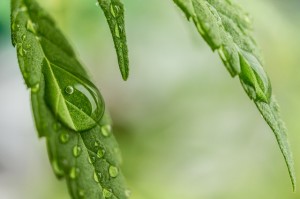Product development in the cannabis industry is trending towards greater
diversity leading to products such as waxes, oils, shatters, sugars,
distillates and many interesting pure compounds. This is due to the
consumer demand for specific, or tailored, product experiences. This
progression is driven by research efforts on the effects of cannabinoids,
terpenes/terpenoids, and flavonoids on human physiology, strain
specificity, and cannabinoid/terpene profiling of strains.
As more products are developed, new technologies are now used to accomplish
different product purities. One of these techniques is called distillation.
In distillation, components in a complex mixture are separated by heating
to their specific boiling points and then cooled to condense in a
collection vessel.
Highly controlled distillation methods result in high purity distillates,
free of contaminants. PhytaTech can provide knowledgeable assistance in the
development of distillation methods and apparatus to produce purified
cannabinoids, terpenes, and flavonoids.
We have compiled useful information for our clients to use during product
development. One example of this is a boiling point infographic, located
below. In the boiling point diagram, the complexity of the cannabinoids
that are evaporated increases as temperature is increased. The same is true
for terpenes. Some cannabinoids, like THC and CBD, have a temperature range
at which they boil, which overlap those of some terpenes. Interestingly,
CBD has an average boiling point of 170°C/338°F which is considered the
“sweet spot” for vaporizing cannabinoids.
What does all this mean? The purity of your distillates will depend on
close monitoring of your temperatures. Are you achieving 95% or greater
purity in your distillates? Are you closely monitoring your temperatures?
Are you concerned about heat degradation of your distillates? What is the
pressure of your system? These types of questions can help standardize your
batch to batch control.
Though cannabinoids and terpenes have similar boiling points, terpenes are
usually lost in the first evaporative fraction (the heads) and last
fractions (the tails) of the distillation waste. Flavonoids have
significantly higher boiling points than either cannabinoids or terpenes,
and are also lost in the heads and tails.
read more on the Phyta Tech Website

